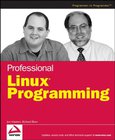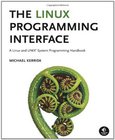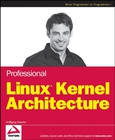Professional Linux Programming

Book Details:
| Publisher: | Peer Information Inc. |
| Series: | Wrox , Professional |
| Author: | Neil Matthew and Richard Stones |
| Edition: | 1 |
| ISBN-10: | 1861003013 |
| ISBN-13: | 9781861003010 |
| Pages: | 1200 |
| Published: | Sep 01 2000 |
| Posted: | Nov 19 2014 |
| Language: | English |
| Book format: | |
| Book size: | 4.92 MB |
Book Description:
As Linux increases its presence throughout the world as a target platform for professional application development, its growth as a powerful, flexible system offering many free development tools assures its place in the future. By giving you easy access to this comprehensive range of tools, supporting new and nascent technologies, at little or no cost, developing with Linux allows you to apply the solution that's right for you. In this follow-up to the best-selling Beginning Linux Programming, you will learn from the authors' real-world knowledge and experience of developing software for Linux; you'll be taken through the development of a sample 'DVD Store' application, with 'theme' chapters addressing different aspects of its implementation. Meanwhile, individual 'take-a-break' chapters cover important topics that go beyond the bounds of the central theme. All focus on the practical aspects of programming, showing how crucial it is to choose the right tools for the job, use them as they should be used, and get things right first time. Who is this book for? Experienced Linux programmers and aspiring developers alike will find a great deal of practical information in this book on libraries, techniques, tools and applications. You should be familiar with a simple Linux system, have a good working knowledge of programming in C, and a basic understanding of object-oriented programming with C++ for the Qt/KDE chapters. What does this book cover? Data storage in Linux - including coverage of PostgreSQL, MySQL and XML Implementation of Linux GUIs - covering both KDE and GNOME Web-based interfaces - using the PHP module for Apache Python - including extending and embedding the language Using RPC and CORBA to construct distributed object-based applications Versioning (with CVS), documentation, internationalization and project distribution Distributed hardware solutions such as diskless Linux and Beowulf clustering
Download Link:
Related Books:
Professional Linux Programming
This book is broken into four primary sections addressing key topics that Linux programmers need to master: Linux nuts and bolts, the Linux kernel, the Linux desktop, and Linux for the WebEffective examples help get readers up to speed with building software on a Linux-based system while using the tools and utilities that contribute to streamlining the software development processDiscusses using emulation and virtualization technologies for kernel development and application testingIncludes useful insights aimed at helping readers understand how their applications code fits in with the rest of the software stackExamines cross-compilation, dynamic device insertion and removal, key Linux projects (such as Project Utopia), and the internationalization c...
The Linux Programming Interface
A Linux and UNIX System Programming Handbook
The Linux Programming Interface is the definitive guide to the Linux and UNIX programming interfacethe interface employed by nearly every application that runs on a Linux or UNIX system.In this authoritative work, Linux programming expert Michael Kerrisk provides detailed descriptions of the system calls and library functions that you need in order to master the craft of system programming, and accompanies his explanations with clear, complete example programs.You'll find descriptions of over 500 system calls and library functions, and more than 200 example programs, 88 tables, and 115 diagrams. You'll learn how to: Read and write files efficiently Use signals, clocks, and timers Create processes and execute programs Write secure programs Write multi...
Professional Linux Kernel Architecture
Find an introduction to the architecture, concepts and algorithms of the Linux kernel in Professional Linux Kernel Architecture, a guide to the kernel sources and large number of connections among subsystems. Find an introduction to the relevant structures and functions exported by the kernel to userland, understand the theoretical and conceptual aspects of the Linux kernel and Unix derivatives, and gain a deeper understanding of the kernel. Learn how to reduce the vast amount of information contained in the kernel sources and obtain the skills necessary to understand the kernel sources....
2007 - 2021 © eBooks-IT.org



